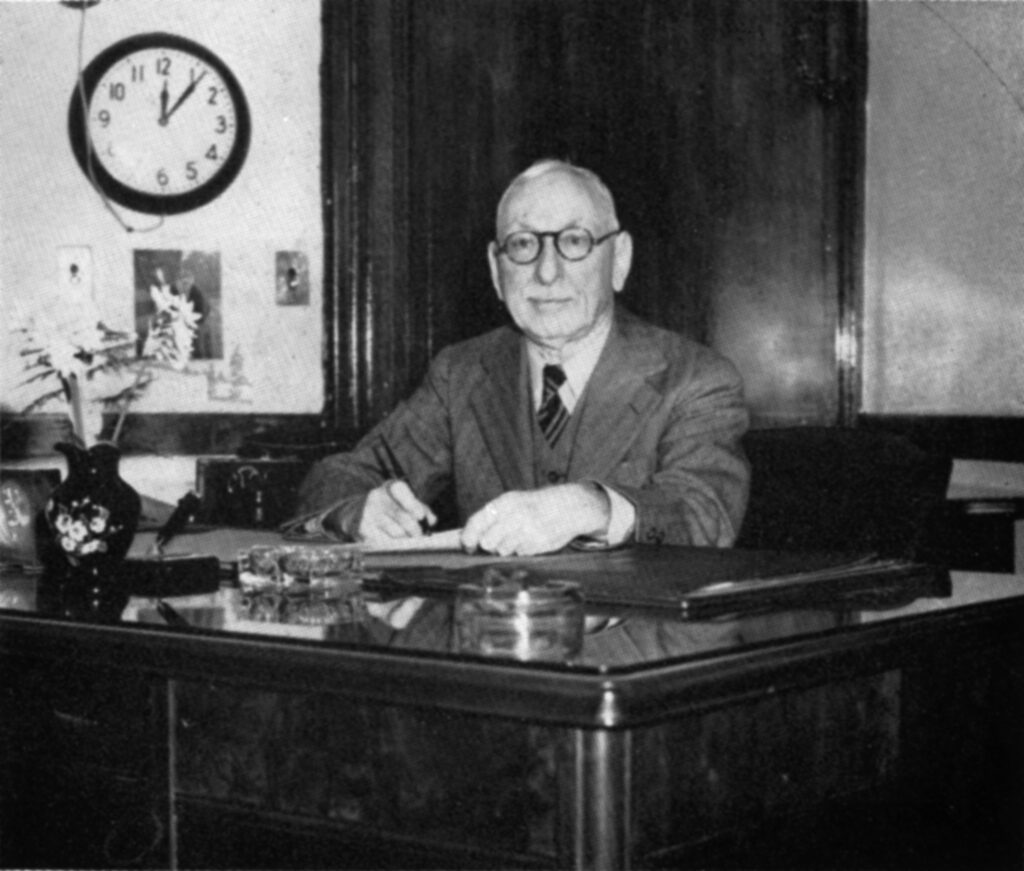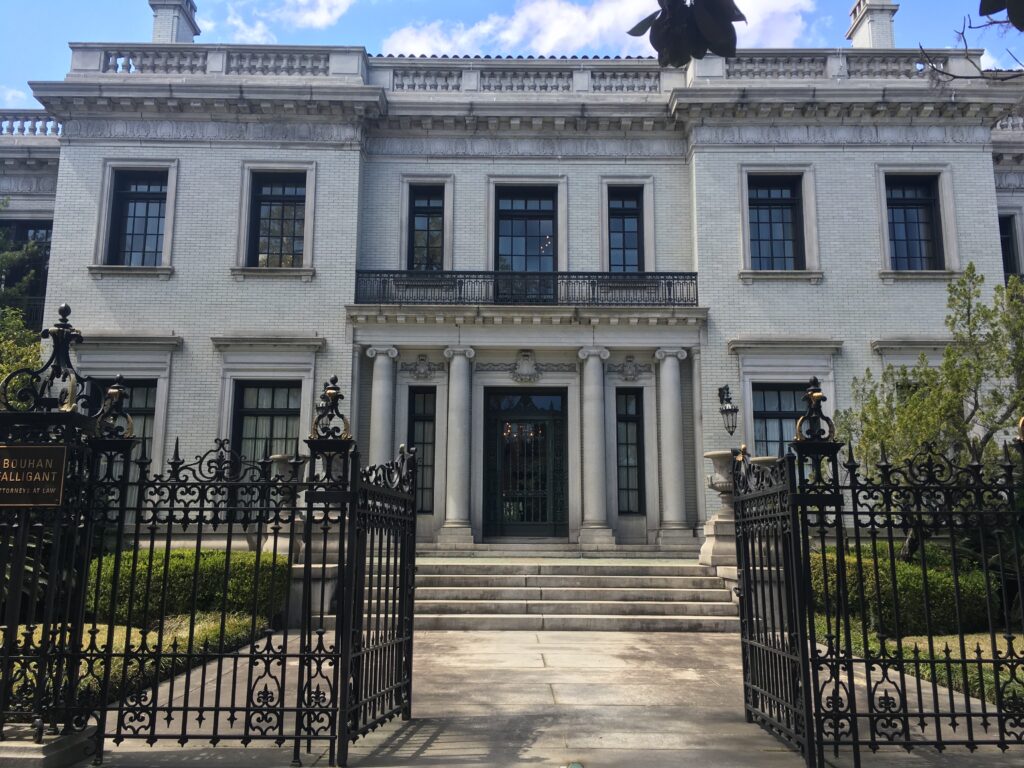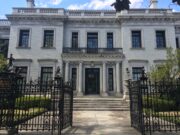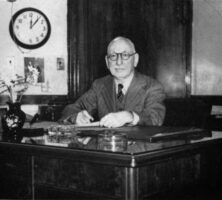Since its founding in 1935, Armstrong State University has evolved from a junior college supported by the city of Savannah into a four-year unit of the University System of Georgia. It now offers a full undergraduate curriculum as well as several graduate programs. Within the university system, Armstrong has been designated a Regional Health Professions Education Center.
City Junior College (1935-1959)

Courtesy of Armstrong State University
Established by Mayor Thomas Gamble and the aldermen of Savannah in May 1935, the college originally occupied the residence of the late George Ferguson Armstrong, a Savannah shipping executive. At Gamble’s request, Armstrong’s widow and daughter donated their home, located on the southern edge of Savannah’s historic district, to the city to house the new school. Early patrons of the college included banker Mills B. Lane Sr. and Savannah newspaper owner Herschel V. Jenkins.
The college’s first president, Ernest A. Lowe, brought useful connections with the University of Georgia and the newly formed university system. When Lowe left in 1941, J. Thomas Askew served briefly as the second president until he entered military service. Foreman M. Hawes became the college’s third president in 1943. During the war Armstrong was essentially a girls’ school with barely 100 students. Hawes led the college through postwar recovery and served until his retirement in 1964.
The University System and Four-Year Status
By the late 1950s the city of Savannah could no longer provide the revenues needed to supplement tuition and fees. With the assistance of a local state legislator and Armstrong alumnus Frank Cheatham negotiations began in 1957 to obtain state funds for the college. These efforts culminated in 1959 when Armstrong College joined the university system, along with a new college in Columbus. In 1963 the Board of Regents authorized Armstrong College and Augusta College (which had joined the university system in 1958) to become nonresidential four-year institutions.
Although the college built, bought, or “borrowed” six buildings close to the Armstrong mansion (using the Georgia Historical Society as its library), plans for new, more modern facilities provoked strong objections from historic preservationists, who feared the effect on Savannah’s traditional squares and architecture. In March 1962 Mills B. Lane Jr. resolved the dilemma by offering to purchase land for a new site for the college. In December 1965 the college moved to a 250-acre tract ten miles south of Savannah’s historic district.
New Campus (1965)
A new president, Henry Ludlow Ashmore, presided over the move, and at the June 1968 graduation he presented the college’s first baccalaureate degrees. Ashmore served as president from 1964 until his retirement in 1982. Under his leadership Armstrong developed new programs in health-related fields, particularly dental hygiene and nursing. The college’s long-range plan for education in the health professions prompted the university system to designate it a Regional Health Professions Education Center.
Armstrong also initiated a teacher education program and in 1971, in conjunction with Savannah State College, began offering graduate courses leading to the master’s of education degree. The new graduate program included a master’s of business administration as well.
Desegregation Plans (1971-1979)
In 1971 Georgia was named in a federal suit charging eight southern states with operating a dual system of racially segregated colleges and universities. The presence of two state-supported, four-year schools in Savannah, the historically Black Savannah State College (later Savannah State University) and the newly expanded Armstrong State College, seemed to offer support for the charge. The joint graduate program of Armstrong State College and Savannah State College was a central feature of Georgia’s effort to persuade the federal courts that the state was in compliance with Title VI of the Civil Rights Act.

Image from NewTestLeper79
Between 1971 and 1979 Georgia submitted four versions of a plan for desegregating the University System of Georgia. The possibility of a merger between Armstrong and Savannah State was a constant subject of discussion in Savannah and at meetings of the university system’s Board of Regents. The final version of the plan did not require that the two schools merge but ruled that Armstrong would award all teacher education degrees in Savannah and all business degree programs would be offered only at Savannah State. Each school claimed that it lost its strongest major program. The affected faculty and students made the move in the fall of 1979.
Regional University Plans
Despite the upheaval of the 1970s and the ongoing shadow of a merger, Armstrong continued to expand its curriculum, adding graduate degrees in nursing and health sciences, as well as master’s degrees in criminal justice and history. In 1984 Robert Adair Burnett became the fifth president of the college (he was acting president, 1982-84). Because of increasing interest in a university-level institution in southeast Georgia, Burnett and other college presidents in the region began to discuss a variety of cooperative configurations that might achieve that goal.
In 1990 the Board of Regents designated Georgia Southern College in Statesboro, sixty miles northwest of Savannah, as a regional university and authorized it to oversee all graduate programs in southeast Georgia, including all of Armstrong’s master’s degree programs. These degrees were now awarded by Georgia Southern University “in affiliation” with Armstrong. This arrangement lasted until 1995, when the Board of Regents reversed its decision and Armstrong regained control of its graduate programs.
Continuing Growth
In 1996 the Board of Regents decided that all state-supported four-year colleges with graduate programs would become universities. This decision prompted a number of Armstrong faculty to propose that the college change its name to include a readily identifiable geographical location. Alumni raised strong objections to any change that would eliminate the Armstrong name, and the resulting compromise produced Armstrong Atlantic State University. Thomas Z. Jones became Armstrong’s sixth president in July 2000.
In 2003 the Goizueta Foundation awarded a grant to establish the Hispanic Outreach and Leadership at Armstrong Atlantic program to provide academic, leadership, and cultural opportunities to Latino students. Armstrong’s total enrollment exceeded 7,000 for the first time in 2004, and over the next several years numerous additions, including residence halls, a conference facility, and a student recreation center, were built. By 2009 the university enrolled 7,067 students and employed 569 faculty. That same year Linda W. Bleicken was named the first woman president of Armstrong.
In 2014 the university’s name reverted to Armstrong State University at the request of school officials, who were concerned that the term “Atlantic” was cumbersome and potentially confusing.








